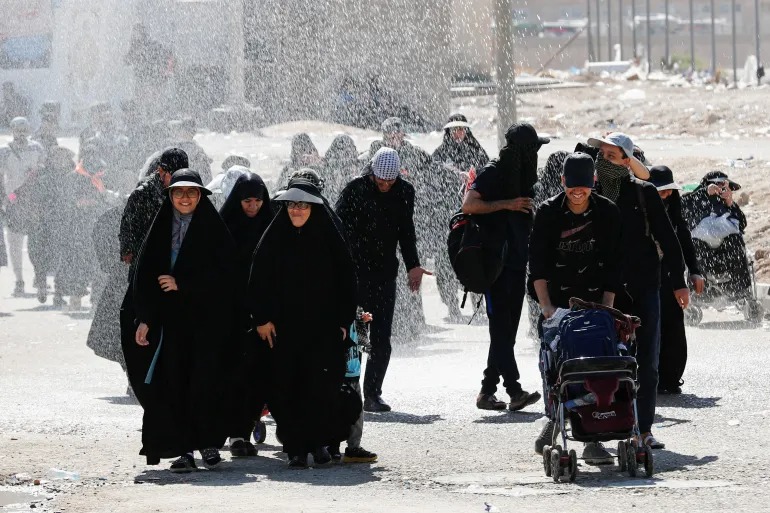After decades of planning and anticipation, Iran and Iraq have officially kicked off construction of the Shalamcheh-Basra railroad, marking a significant milestone in their bilateral relations. The ambitious project aims to connect the Iranian border town of Shalamcheh with the southeastern Iraqi city of Basra, ushering in a new era of enhanced transportation, economic cooperation, and geopolitical significance. In this report, we delve into the details of this transformative railway endeavor, the challenges it faces, and why it holds profound geopolitical importance for both nations.
What is the Shalamcheh-Basra Railroad?
The Shalamcheh-Basra railroad project is set to become a vital transportation artery linking Iran and Iraq. With a total length of 32 kilometers (approximately 20 miles), this railway will accommodate passengers and cargo, providing a convenient and efficient means of transportation between the two countries. Iranian officials have set an ambitious timeline for completion, targeting a span of 18 to 24 months to finalize the construction.
The origins of this project trace back to 2014 when Tehran and Baghdad initially inked an agreement to develop this critical route. Unfortunately, their progress was thwarted by the violent incursion of the ISIS group in Iraq, leading to a temporary suspension of the project. However, as the security and political situation in Iraq improved, both nations recommitted to the project in late 2021, although the initial two-year completion goal remained unmet.
In a pivotal meeting held in April, Iraqi Transport Minister Razzaq Al-Saadawi visited Tehran, resulting in agreements that paved the way for the recent announcement and renewed optimism about the project’s prospects. Iranian First Vice President Mohammad Mokhber revealed that plans for this railway had been in the making for decades, dating back to the period just prior to the Islamic Revolution in Iran in 1979.
An intriguing facet of this project is the plan to construct a moveable bridge over the waterway dividing the two nations, known as the Arvand River in Iran and Shatt al-Arab in Iraq. This bridge will enable ships to pass beneath it, ensuring unhindered navigation.
What are the Challenges?
Despite the positive developments, several challenges loom over the Shalamcheh-Basra railroad project. One of the foremost challenges is the necessity to dredge the waterway to accommodate both the moveable bridge and vessels passing beneath it. Decades of neglect have caused sediment to accumulate at the riverbed, necessitating extensive dredging efforts.
Additionally, the Iraqi side faces a unique hurdle – the need to clear a vast area of mines before beginning construction of tracks on their territory. Iran had already undertaken this challenging task on its side, dating back to the Iran-Iraq War of the 1980s. Speculations persist that external factors, possibly involving the United States, may have influenced Iraq’s progress on the project.
Another intriguing aspect of the project’s challenges is the potential competition with the Development Road project, connecting the southern port of al-Faw in Basra governorate to Turkey, set to be completed in 2025. Some Iranian media outlets have speculated that Iraq may be prioritizing this alternative project over the Shalamcheh-Basra railroad.
What is the Railway’s Geopolitical Significance?
The Shalamcheh-Basra railroad holds profound geopolitical significance for both Iran and Iraq. For Iran, this project aligns with its broader strategy of expanding its national rail network and enhancing regional integration. President Ebrahim Raisi’s administration is actively pursuing multiple major rail projects, positioning Iran at the crossroads of critical transportation routes.
One of the most immediate benefits of this railway is its connection to the holy cities of Najaf and Karbala in Iraq, easing the transportation burden for millions of pilgrims traveling through Iran to reach these significant religious sites. Additionally, as Iran continues to grapple with harsh U.S. sanctions imposed after the 2018 withdrawal from the Iran nuclear deal, improved transportation and increased trade facilitated by the railway will be instrumental in bolstering the Iranian economy.
Furthermore, this railway project aligns with the broader vision of the International North-South Transport Corridor, aiming to connect India to Central Asia and Russia through Iran. As Iran positions itself as a key player in major transportation lines, it reinforces its regional influence and connectivity, a crucial element of its geopolitical strategy.
In conclusion, the commencement of construction on the Shalamcheh-Basra railroad represents a significant step forward for Iran and Iraq, promising enhanced connectivity, economic benefits, and strategic importance. Despite persistent challenges, both nations are determined to see this transformative project through to completion, ushering in a new era of cooperation and opportunity in the Middle East.














